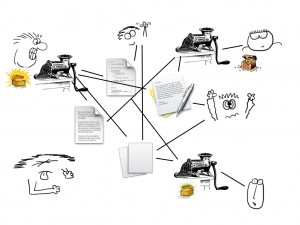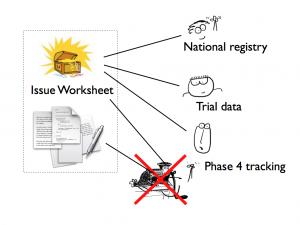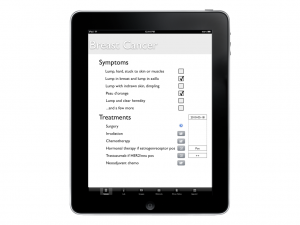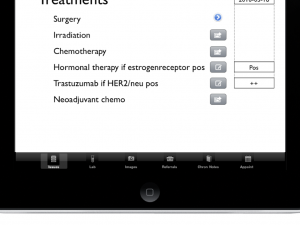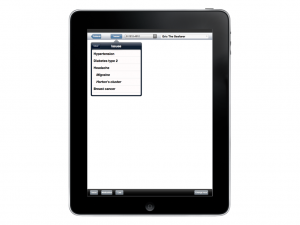I scraped together the following from a number of sources and got it to work fine and without compiler warnings. Interesting links are, among others:
http://cocoawithlove.com/2008/03/construct-nsinvocation-for-any-message.html
http://macdevelopertips.com/objective-c/objective-c-categories.html
But, I get ahead of myself. The idea here is to have one object forward method invocations to another. Typically, you have a class responding to method A, then you decide to make an instance of that class a member of an outer class and any messages for the methods sent to the outer class should be forwarded to the inner class if that’s where they are to be handled. And, of course, you don’t want to sit and write all these methods again in the outer class just so the inner class gets called. An example:
I have a class I call IotaDOM2TableProxy which has a method “rowsInSection:”. The class IssueWorksheet holds an instance of IotaDOM2TableProxy as a property. I now want any “rowsInSection” messages sent to the outer IssueWorksheet to be forwarded to the inner IotaDOM2TableProxy object without having to declare any “rowsInSection” method for the IssueWorksheet class. This is how you do it.
Firstly: the target, the IotaDOM2TableProxy class, needs no modification at all. It never knows what hit it, or rather, where the invocations come from. So we’ll not say anything more about it than that it contains the declaration of the “rowsInSection:” method (among a load of other stuff):
@interface IotaDOM2TableProxy : NSObject {
...
}
- (NSUInteger)rowsInSection:(NSUInteger)section;
@end
The IssueWorksheet class holds an instance of the IotaDOM2TableProxy, and does not declare any method called “rowsInSection”:
@interface IssueWorksheet : NSObject {
IotaDOM2TableProxy *dom2tableProxy;
}
@property (nonatomic, retain) IotaDOM2TableProxy *dom2tableProxy;
@end
To make IssueWorksheet forward any calls it doesn’t know about to IotaDOM2TableProxy, we have to override three methods in IssueWorksheet:
- (BOOL)respondsToSelector:(SEL)aSelector {
return [super respondsToSelector:aSelector] ||
[self.dom2tableProxy respondsToSelector:aSelector];
}
- (NSMethodSignature *)methodSignatureForSelector:(SEL)aSelector {
NSMethodSignature *sig;
sig = [super methodSignatureForSelector:aSelector];
if (sig == nil)
sig = [self.dom2tableProxy methodSignatureForSelector:aSelector];
return sig;
}
- (void)forwardInvocation:(NSInvocation *)invocation {
SEL aSelector = [invocation selector];
if ([self.dom2tableProxy respondsToSelector:aSelector])
[invocation invokeWithTarget:self.dom2tableProxy];
else
[self doesNotRecognizeSelector:aSelector];
}
And this works beautifully for one, two, or any number of methods to forward. There’s just one problem: the compiler complains that IssueWorksheet “may not respond to method…” and we should always eliminate warnings. The easiest way is to declare the forwarded methods in a category, which only mildly defeats the purpose of the exercise. But it works and is safe. You do that by adding the category after the interface declaration of IssueWorksheet, so the header file will now look as follows in its entirety:
// // IssueWorksheet.h // iotaPad1 // // Created by Martin on 2010-06-08. // #import#import "IotaDOM2TableProxy.h" @interface IssueWorksheet : NSObject { IotaDOM2TableProxy *dom2tableProxy; } @property (nonatomic, retain) IotaDOM2TableProxy *dom2tableProxy; - (id)initFromFile:(NSString *)name ofType:(NSString *)type; @end @interface IssueWorksheet (ForwardedMethods) - (NSUInteger)rowsInSection:(NSUInteger)section; @end
In the above, I call the category “ForwardedMethods”, but you can call it anything you like. The name doesn’t matter and isn’t referenced anywhere else, but the category must have a unique name of some sort.
Please note: there is no implementation in the .m file for “rowsInSection”. The category definition suffices to shut the compiler up.

